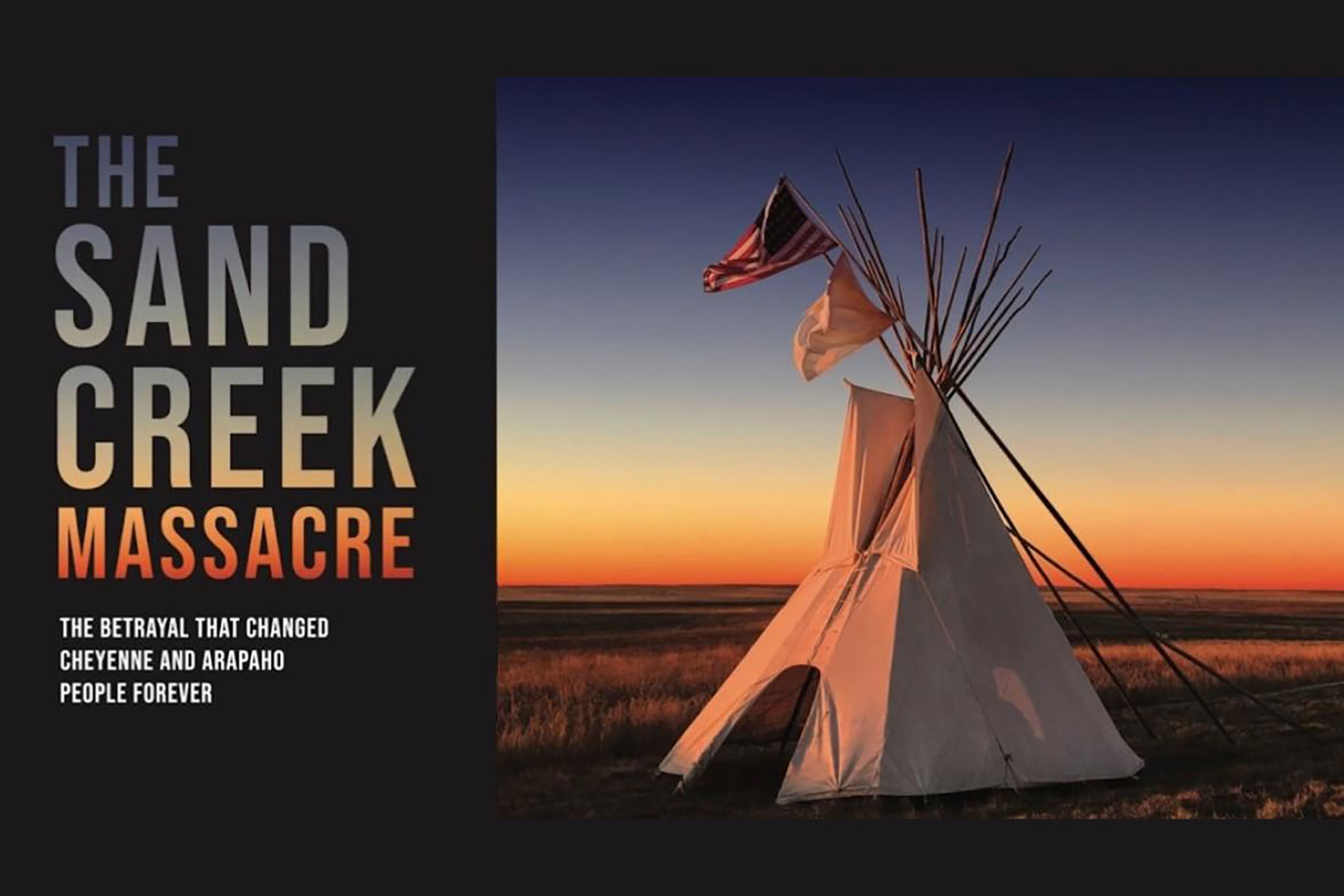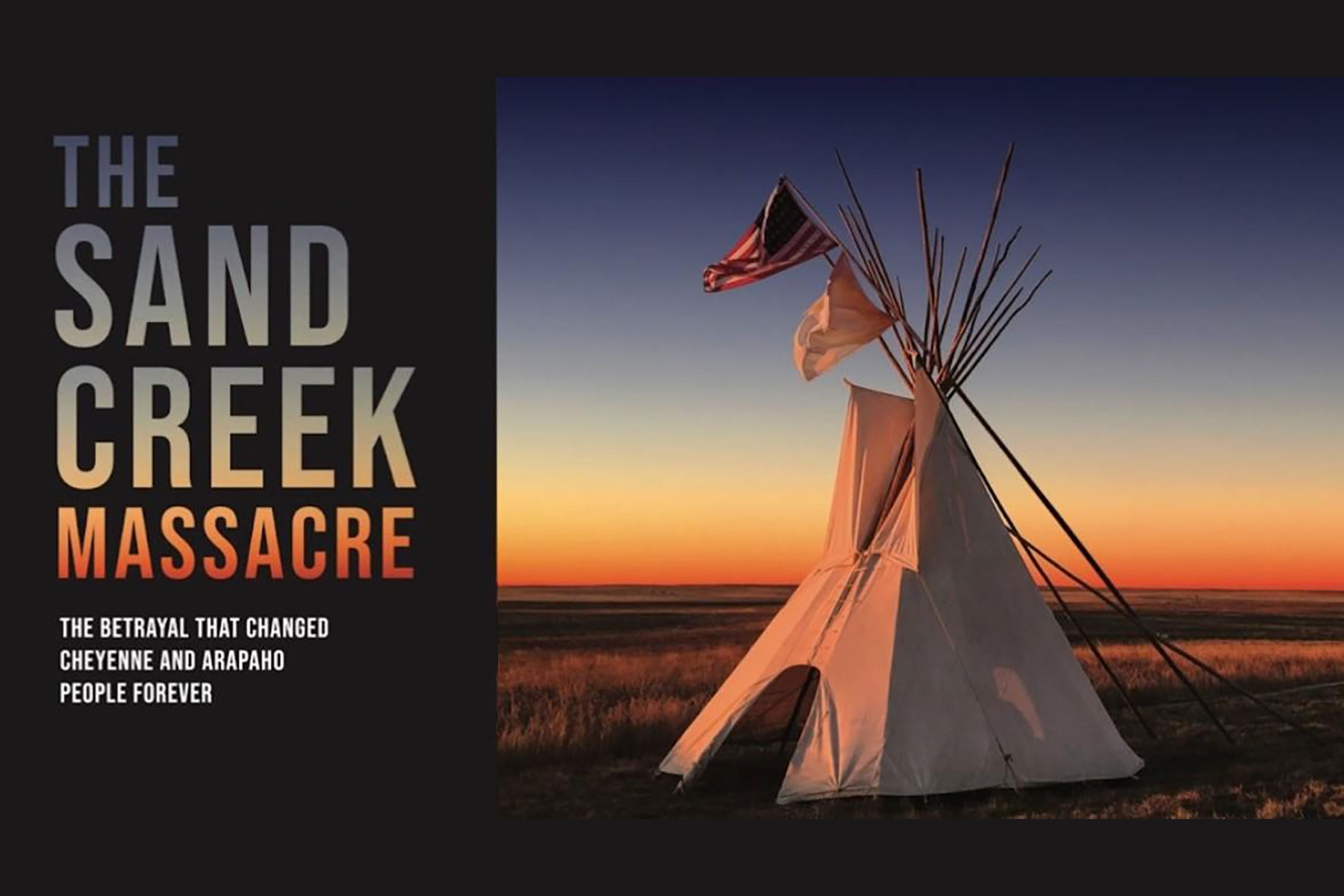On Nov. 19, 2022, a new exhibition The Sand Creek Massacre: The Betrayal that Changed Cheyenne and Arapaho People Forever, opens at the History Colorado Center in Denver. The exhibit will recount the deadliest day in Colorado history – Nov. 29, 1864 – when U.S. troops brutally attacked a peaceful village of Cheyenne and Arapaho people who were promised military protection. More than 230 women, children and elders were murdered that day.
The exhibition was made in deep consultation with representatives from the Cheyenne and Arapaho Tribes. For the first time, History Colorado will be sharing the events of the Sand Creek Massacre based on tribal accounts and oral histories from the descendants of those who survived the Massacre.
“It was genocide. We need to educate the people and heal our people so that something like this won’t happen again,” said Chester Whiteman (Southern Cheyenne). “I hope this exhibit will get people to understand that we’re all human.”
“The Sand Creek Massacre is sacred,” said Gail Ridgely (Northern Arapaho). “Historic remembrance, educational awareness and spiritual healing are very important for the Cheyenne and Arapaho people.”
History Colorado will spotlight the living culture of the Cheyenne and Arapaho, two separate Tribes with distinct histories that were bound together forever after the tragedy at Sand Creek. Forced to leave Colorado after the Massacre, the Cheyenne and Arapaho people exist today as three sovereign tribal nations in Montana, Oklahoma, and Wyoming. The exhibition is the result of a ten-year partnership process that began in 2012 between History Colorado and the three tribal nations.
“This exhibit offers universal, timely lessons that fear, racism, greed and stereotyping can, and do, lead to catastrophic consequences. History Colorado is committed to educating our community about this horrific event in our history,” said Dawn DiPrince, Executive Director of History Colorado and State Historic Preservation Officer. “We are grateful to our tribal partners for their generous contributions of knowledge to the development of this important exhibit.”
The exhibition will enable visitors to experience:
- Historic and contemporary objects exploring Cheyenne culture and traditions;
- Photos and artifacts representing Arapaho people from the 1900s to today;
- Tipis constructed in Cheyenne and Arapaho styles;
- Audio guides in four languages: Cheyenne, Arapaho, Spanish and English;
- A listening station for oral histories from Cheyenne and Arapaho descendants of survivors of the Massacre;
- A listening station for letters written by soldiers who heroically refused their orders to attack the peaceful Cheyenne and Arapaho camps;
- Historical documents from congressional and military investigations that took place following the Massacre;
- The creation of the Sand Creek Massacre National Historic Site, a unit of the National Park Service (NPS), and;
- A look at the three Tribal nations today, and the ongoing efforts to commemorate, educate, and heal from the Massacre.
“This exhibition will include information about the lives of the Cheyenne and Arapaho people before the Massacre, life today and our efforts to remember the Massacre,” explains Fred Mosqueda (Southern Arapaho). Each exhibition element was vetted and approved by tribal representatives. Following proper protocol, this consultation ensures the display respects the memories of the victims. At the request of the tribes, the exhibition will not include artifacts from the day or site of the massacre.
“We’ve had difficult times in the past with History Colorado. This exhibition shows commitment and dedication,” stated Otto Braided Hair, Jr. (Northern Cheyenne).
“The Sand Creek Massacre exhibition will demonstrate that people can work humbly together to remember and begin to heal from atrocities and betrayals such as this,” said Shannon Voirol, Sand Creek Massacre project director at History Colorado.
The Sand Creek Massacre: The Betrayal that Changed Cheyenne and Arapaho People Forever was made possible by substantial grants from the National Endowment for the Humanities and the Institute of Museum and Library Services.




